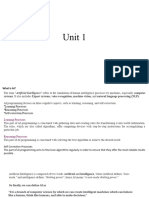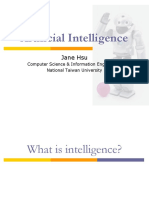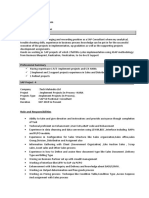0% found this document useful (0 votes)
132 views7 pagesIntroduction To AI
The document introduces artificial intelligence (AI), detailing its definition, history, and applications in everyday life. It outlines the learning outcomes for students, emphasizing the importance of understanding AI's impact on society, smart living, and ethical considerations. Additionally, it discusses the evolution of AI from its inception to modern advancements, highlighting various AI-powered applications and the concept of smart homes.
Uploaded by
surovitarushasahaCopyright
© © All Rights Reserved
We take content rights seriously. If you suspect this is your content, claim it here.
Available Formats
Download as PDF, TXT or read online on Scribd
0% found this document useful (0 votes)
132 views7 pagesIntroduction To AI
The document introduces artificial intelligence (AI), detailing its definition, history, and applications in everyday life. It outlines the learning outcomes for students, emphasizing the importance of understanding AI's impact on society, smart living, and ethical considerations. Additionally, it discusses the evolution of AI from its inception to modern advancements, highlighting various AI-powered applications and the concept of smart homes.
Uploaded by
surovitarushasahaCopyright
© © All Rights Reserved
We take content rights seriously. If you suspect this is your content, claim it here.
Available Formats
Download as PDF, TXT or read online on Scribd
/ 7



















































































